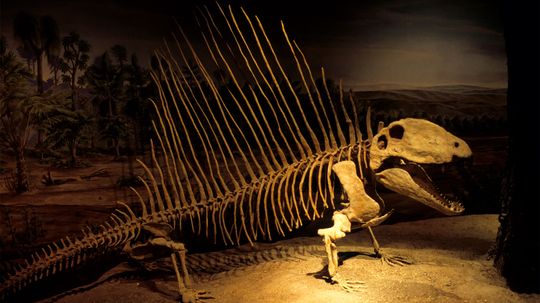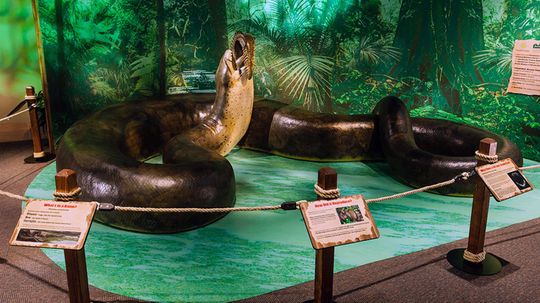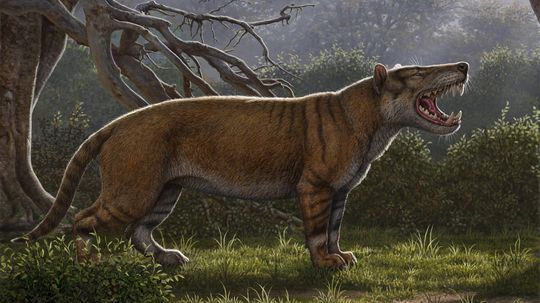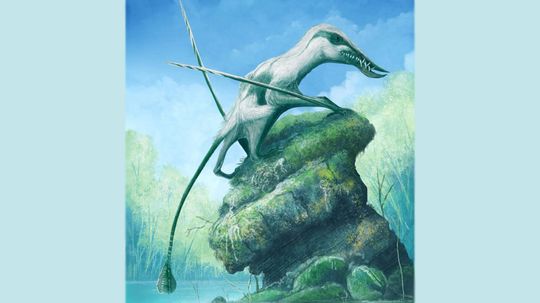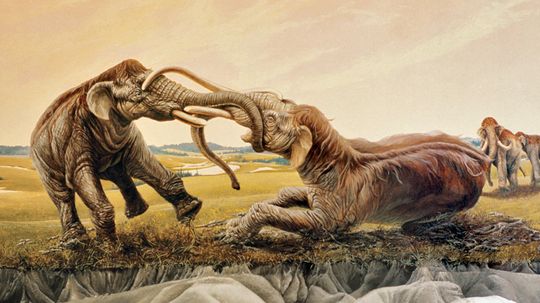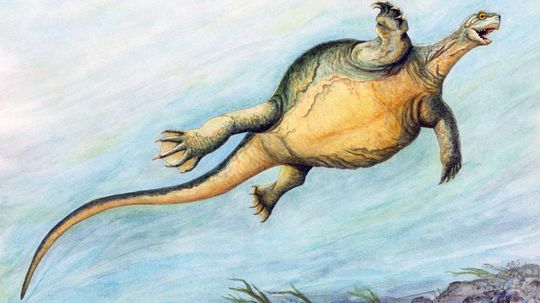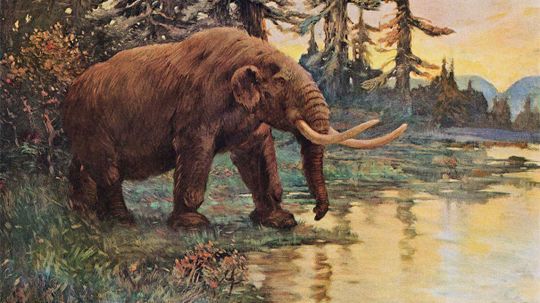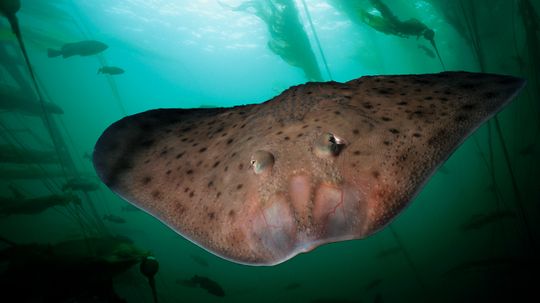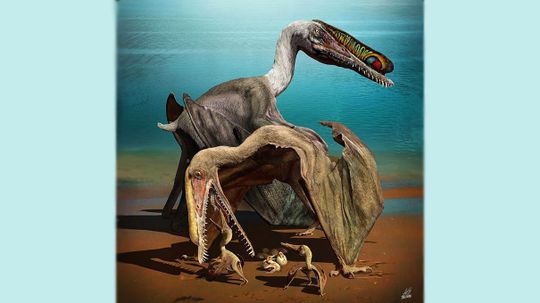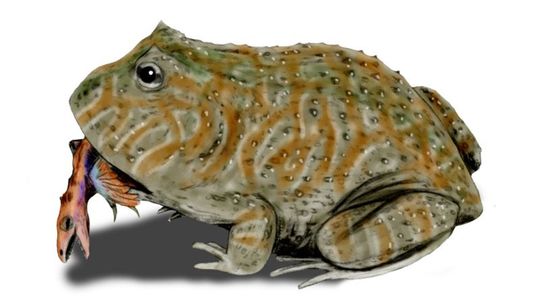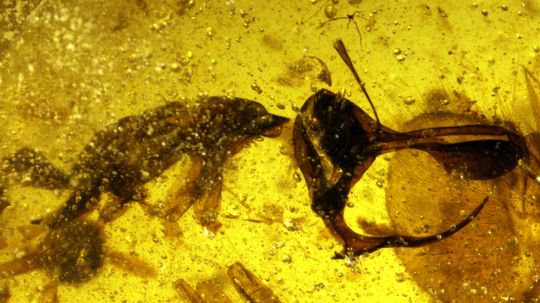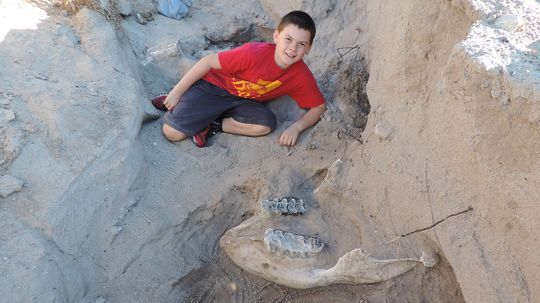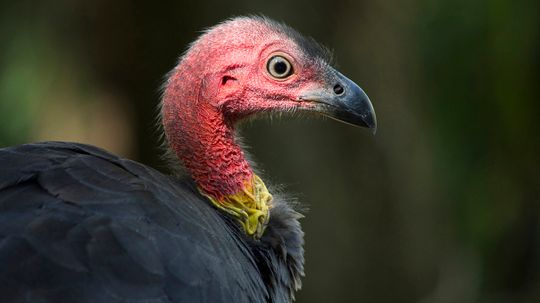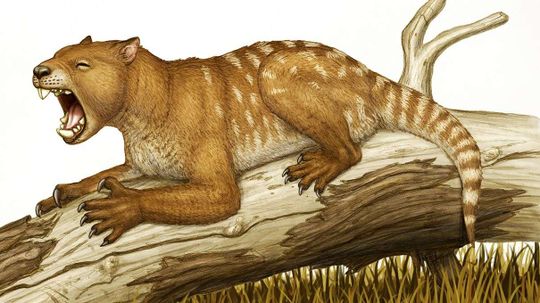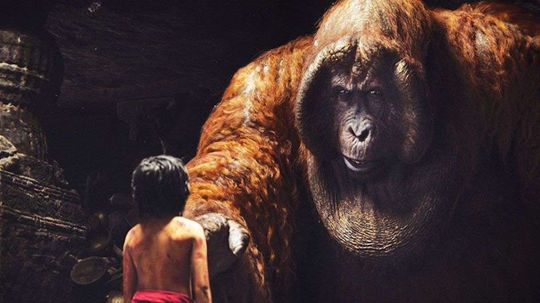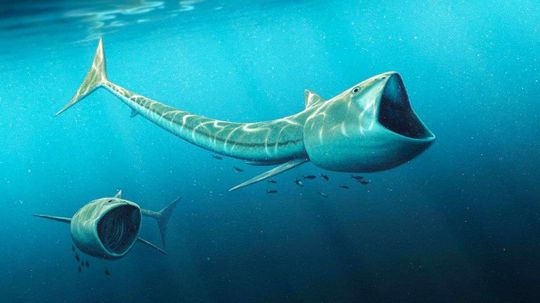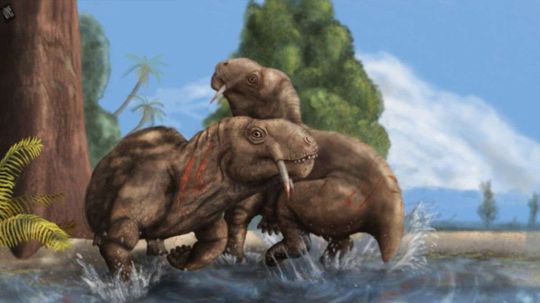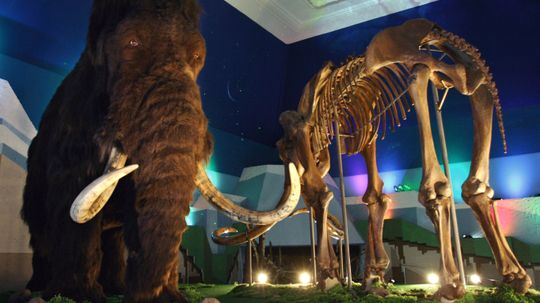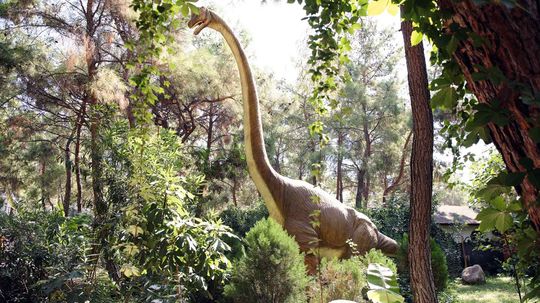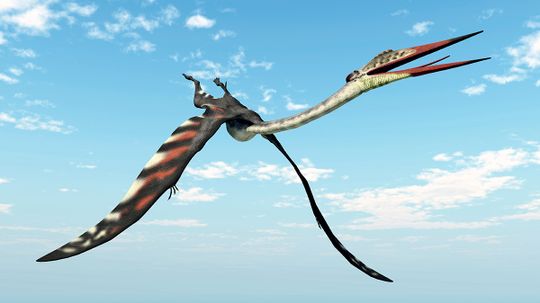Extinct Mammals
While Mammoths and Saber Toothed Tigers died out long ago, modern mammals are increasingly at risk of extinction due to human intervention. Explore some species that are no longer with us.
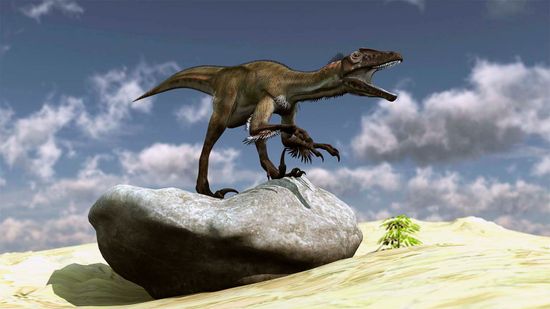
Utahraptor: The Salty Saga of a Killer Dinosaur
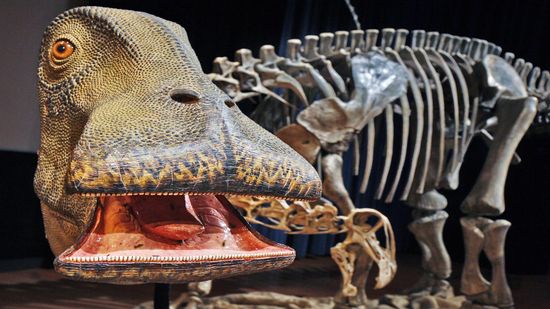
Nigersaurus: The 'Mesozoic Cow' With More Than 500 Teeth
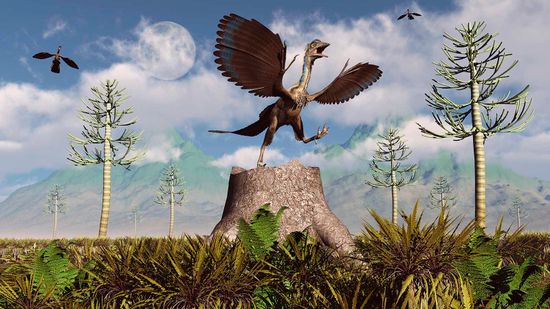
Meet Archaeopteryx, a Feathered Dino With Wings and Teeth

Real Life 'Jurassic Park'? Scientists Work to Bring Back Extinct Thylacine
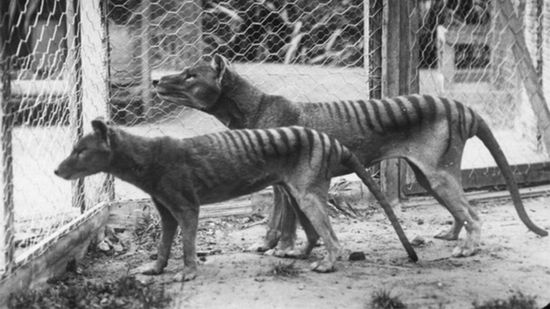
Once Thought Extinct, the Tasmanian Tiger May Still Be Prowling the Planet
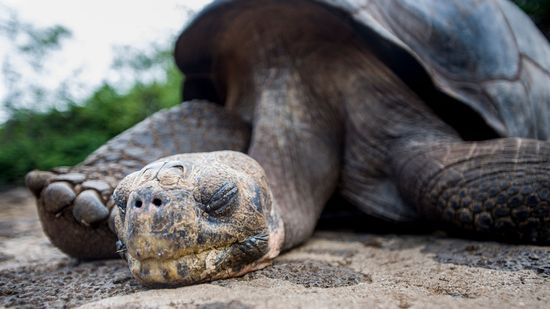
Lonesome George Lived to Be 100 Years Old. Genome Sequencing Is Figuring Out How
Learn More
Dimetrodon may look for all the world like a dinosaur, but was actually closer, evolutionarily speaking, to humans. Scientists are still trying to figure what their magnificent sails were used for.
The giant castoroides thrived in the Great Plains, the Great Lakes region, the American South and Alaska. So why did this massive beaver die out?
The extinct Titanoboa snake lived around 66 million to 56 million years ago. These things were massive and could reach 50 feet long and 3 feet wide making them the largest snake ever to have roamed the Earth.
Advertisement
Back in the day, the soupy pre-Amazonian waters were filled with beasts like Stupendemys geographicus, a giant turtle the size of a sensible sedan.
The fossilized remains of Simbakubwa kutokaafrika, which means "big lion from Africa," were discovered not once, but twice.
These super-frightening entelodonts (aka hell pigs) once patrolled throughout Eurasia, North America and Africa.
Mid-Jurassic England was teeming with flighted creatures. Now we know it included one pterosaur called Klobiodon rochei.
Advertisement
The battle clearly ended in a slow death for both massive male beasts.
A 220 million-year-old turtle fossil discovered in China is the first of its kind ever to be found.
肯塔基州在巨大的乳齿象在低last ice age. Jefferson was so fascinated by the creatures he was convinced they still roamed the plains in the 1800s.
Walking evolved not on land but underwater.
Advertisement
Paleontologists in China hit the jackpot of fossilized pterosaur eggs.
A new study found that the Beelzebufo frog had a bite strong enough to take down dinosaurs.
Instead of a mouth, the hell ant had blades and a metal horn to catch its prey. Ouch.
A new study suggests the extinct aquatic reptiles used all four flippers for uniquely efficient underwater motion.
Advertisement
Accidentally tripping on and discovering the fossilized skull of an extinct giant elephant seems like a 9-year-old's dream come true.
The megapodes were supertall, but that didn't keep them from taking flight.
The method this ancient carnivore employed is unlike anything we see in predators today.
The character of King Louie gets a serious primate upgrade in the new Disney live-action-meets-CGI film. Did the ape also serve as inspiration for sasquatch and yeti?
Advertisement
Scientists thought climate and ecological change was the culprit, but a new study suggests otherwise.
The bony fish measured more than six feet long and ate prey using a filtering system similar to that of animals today.
Scientists discover male animals flashed sabers far longer than first thought.
Both of these massive prehistoric creatures belonged to the same family, but they're actually very different species.
Advertisement
A lot of prehistoric animals were massive, but do we really know why? And is there a larger animal roaming the planet today?
They were creatures of the air, but they aren't part of the avian family tree — and don't call them dinosaurs. What was life like for the pterosaurs, and what has sparked renewed interest in these flying reptiles?
